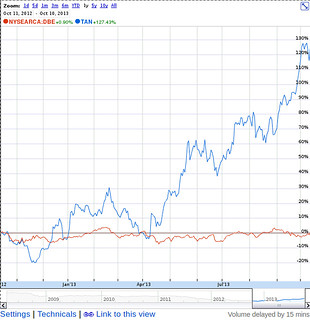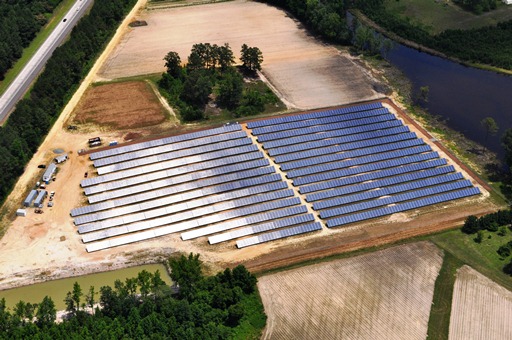 How about we recognize every place is
the worst place for the water-risking land-taking hazardous methane pipeline,
and get on with
sun, wind, and water to power Florida, Georgia, Alabama,
and
all the other states?
How about we recognize every place is
the worst place for the water-risking land-taking hazardous methane pipeline,
and get on with
sun, wind, and water to power Florida, Georgia, Alabama,
and
all the other states?
According to Stanford University researchers, we can do that, and we can do it 100% by 2050, using technology that’s already available. For Florida, that’s 20% rooftop solar PV (half residential and half commercial and governmental), 47.9% solar PV plants, 10% concentrating solar plants, 5% onshore wind, 15% offshore wind, 1% each wave and tide, 0.1% hydroelectric. So that’s 77.9% sun, 20% wind, 1% wave, 1% tide, and 0.1% hydro.
Requiring 0% nuclear, 0% coal, and 0% natural gas. That’s right, Florida doesn’t need methane to shut down coal and nukes. All the Sunshine State needs is sun, wind, and water.
With 355,500 construction jobs and 149,000 operation jobs, $20.1 billion or 3% of Florida’s GDP saved in avoided health costs, 2,210 Floridans not dead from air pollution.
Oh, and 42.9% less energy used over all, plus energy costs to customers cut more than in half.
Who are you going to believe? Researchers at Stanford who have no financial stake in the outcome? Or pipeline companies and utility companies that stand to profit from taking people’s land and polluting everyone’s air for their hazardous fracked gas? Including a pipeline company that turned in a Draft Resource Report 10: Alternatives (RR10) so bad in its bogus allegations about solar and wind power that it’s hard to imagine any professor at Stanford or UFL who wouldn’t give it an F?
 And utility companies desperately trying to stick with their
cozy century-long baseload-capacity model of a few big power plants
even as it plummets faster in what the Wall Street Journal calls its
“death spiral”?
Liam Denning wrote for WSJ 22 December 2013,
Lights Flicker for Utilities,
And utility companies desperately trying to stick with their
cozy century-long baseload-capacity model of a few big power plants
even as it plummets faster in what the Wall Street Journal calls its
“death spiral”?
Liam Denning wrote for WSJ 22 December 2013,
Lights Flicker for Utilities,
What if the stock market’s safest sector was doomed?
Utilities seem indispensable. Yet suddenly there is talk on Wall Street of a looming “death spiral” for the business, with solar power being the culprit.
People were already using less electricity, even before distributed rooftop solar let lots of us generate it ourselves instead of buying it from the utlities.
 How is this death spiral affecting stocks?
Greg Guenther in Daily Reckoning 10 March 2013,
Solar Power Shocks the Utilities Sector
compared the Gugenheim Solar ETF (TAN) against the Dow Jones Utility Average
(see graph above)
and got pretty much the same results as I did
comparing TAN against the PowerShares DB Energy Fund (NYSEARCA:DBE), which invests in oil and natural gas companies (see graph below).
How is this death spiral affecting stocks?
Greg Guenther in Daily Reckoning 10 March 2013,
Solar Power Shocks the Utilities Sector
compared the Gugenheim Solar ETF (TAN) against the Dow Jones Utility Average
(see graph above)
and got pretty much the same results as I did
comparing TAN against the PowerShares DB Energy Fund (NYSEARCA:DBE), which invests in oil and natural gas companies (see graph below).
 Solar stocks shot up more than 100% in a year while utility and fossil fuel stocks
hardly moved.
You may not see share prices for utility companies dropping yet,
but if that comparison continues, and it will, you’ll see mighty FPL and Duke
and Southern Company and all the rest,
including relatively tiny Spectra Energy, dropping like rocks.
Solar stocks shot up more than 100% in a year while utility and fossil fuel stocks
hardly moved.
You may not see share prices for utility companies dropping yet,
but if that comparison continues, and it will, you’ll see mighty FPL and Duke
and Southern Company and all the rest,
including relatively tiny Spectra Energy, dropping like rocks.
 This death spiral is caused by
the rapidly decreasing cost of solar photovoltaic power,
which is
already cheaper than any other source of energy (including “natural” gas) and
just keeps getting cheaper.
Especially distributed rooftop solar, generating most at peak load
times when the utilities are used to charging the most, is
causing massive disruption,
as the electric utilities’ own think tank Edison Electric Institute
spelled out for them more than a year ago.
This death spiral is caused by
the rapidly decreasing cost of solar photovoltaic power,
which is
already cheaper than any other source of energy (including “natural” gas) and
just keeps getting cheaper.
Especially distributed rooftop solar, generating most at peak load
times when the utilities are used to charging the most, is
causing massive disruption,
as the electric utilities’ own think tank Edison Electric Institute
spelled out for them more than a year ago.
 When the utilities could be getting on with
utility-owned rooftop solar
as suggested by both Southern Company CEO Tom Fanning
and former U.S. Department of Energy Chair Steven Chu?
Utlity-owned rooftop solar which would give the utilities
ongoing profit while lowering prices to their customers
and eliminating any need for new nukes, coal, or gas plants,
and instead enabling them to shut down more of those dirty dinosaurs?
When the utilities could be getting on with
utility-owned rooftop solar
as suggested by both Southern Company CEO Tom Fanning
and former U.S. Department of Energy Chair Steven Chu?
Utlity-owned rooftop solar which would give the utilities
ongoing profit while lowering prices to their customers
and eliminating any need for new nukes, coal, or gas plants,
and instead enabling them to shut down more of those dirty dinosaurs?
Sure, some parts of that 100% sun, wind, and water future
 will take a while, such as switching cars from oil to electricity,
even though
Tesla’s Model S
is already the best-selling car in its class in the U.S.
But distributed solar power, both on rooftops and in solar farms,
is here right now, with no new technology or infrastructure needed.
Duke Energy is busily buying energy from
solar farms such as Sandy Hill Solar in North Carolina,
where
John Downey says in the Charlotte Business Journal says
Solar benefits outweigh costs in NC.
That must be more true farther south in the Sunshine State!
So why let Duke pull Sabal Trail methane
through a special Citrus County Pipeline
to its
Crystal River power location
when it could shut down coal-burning Crystal River 1 and 2 by deploying
solar power on rooftops and solar farms?
Why let FPL and Spectra and Williams take our lands for their profit
and no advantage to us, the citizens of the southeast?
will take a while, such as switching cars from oil to electricity,
even though
Tesla’s Model S
is already the best-selling car in its class in the U.S.
But distributed solar power, both on rooftops and in solar farms,
is here right now, with no new technology or infrastructure needed.
Duke Energy is busily buying energy from
solar farms such as Sandy Hill Solar in North Carolina,
where
John Downey says in the Charlotte Business Journal says
Solar benefits outweigh costs in NC.
That must be more true farther south in the Sunshine State!
So why let Duke pull Sabal Trail methane
through a special Citrus County Pipeline
to its
Crystal River power location
when it could shut down coal-burning Crystal River 1 and 2 by deploying
solar power on rooftops and solar farms?
Why let FPL and Spectra and Williams take our lands for their profit
and no advantage to us, the citizens of the southeast?
 Which do you want?
A dirty, destructive, hazardous methane pipeline taking people’s land
and risking Florida’s (and Georgia’s and Alabama’s) drinking water
and health and safety, and that’s going to be obsolete within a decade anyway?
Or just get on with the real energy future of clean, safe, prosperous
sun, wind, and water power for the Sunshine State,
the southeast, and the United States?
Which do you want?
A dirty, destructive, hazardous methane pipeline taking people’s land
and risking Florida’s (and Georgia’s and Alabama’s) drinking water
and health and safety, and that’s going to be obsolete within a decade anyway?
Or just get on with the real energy future of clean, safe, prosperous
sun, wind, and water power for the Sunshine State,
the southeast, and the United States?
-jsq
Short Link:
5 thoughts on “Less cost, more jobs, and better health with sun, wind, and water power for Florida, or a dirty destructive methane pipeline?”